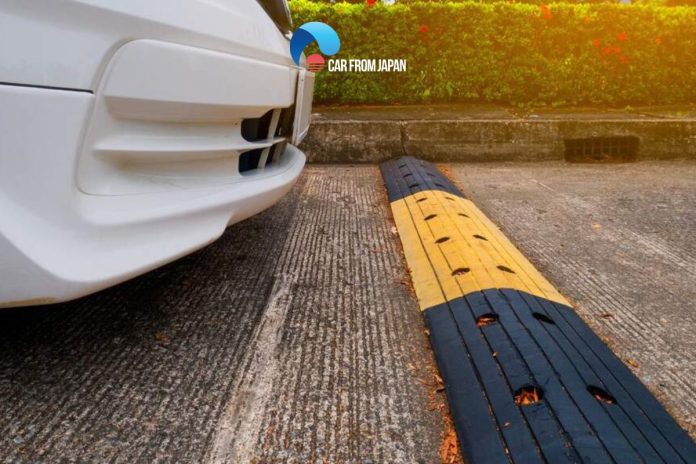Unfortunately, we don’t always find ourselves driving over perfectly smooth, freshly paved roads. And while rough roads may cause some issues with your vehicle, they can also help diagnose potential issues.
A thumping noise while driving over bumps can be startling for a driver, especially if the same noise did not manifest itself on flat roads.
Here are reasons for the thumping sounds while driving over bumps that your car may have!
Contents
- What Are The Reasons For The Thumping Sounds While Driving Over Bumps
- FAQs on Thumping Sounds While Driving Over Sharp Bumps
- Why does the thumping sound only happen on sharp bumps, not on gentle ones?
- Why do I hear a single thump after every bump instead of continuous rattling?
- Why does my car make a thump only when hitting bumps on one side (left or right)?
- Why does the thumping seem louder in the cabin than outside the car?
- Why does the thumping go away after driving for a while?
What Are The Reasons For The Thumping Sounds While Driving Over Bumps
The suspension system and brake system in your vehicle are made up of many components that adjust when driving over rough terrain to ensure a comfortable ride.
When these components fail, they may make clunking or thumping noises to alert you that something is wrong.
When suspension components such as tie rod end and ball joints fail, they typically make a thumping noise all the time, not just over bumps, and brake system failure and cause squeaking, clunking, and thumping noise.
Worn Out Or Damaged Shocks And Struts
In good condition, shocks and struts help your car handle whatever the road throws at it: bumps, debris, sudden stops, swerving, potholes, wind gusts, or sharp turns.
They maintain optimal tire contact with the road by controlling the side-to-side, front-to-back, and up-and-down shifts of the car’s weight.
Shocks and struts are heavy-duty components. Over the course of 50,000 miles, they can complete 75 million cycles. They can move up and down 1,500 to 1,900 times per mile, even on well-paved roads.
They work in tandem with the brakes, steering, suspension, tires, and electronic safety systems – anti-lock brakes, stability control, and crash avoidance systems – to keep a vehicle on the road safely.
They:
- Maintain tire contact with the road by preventing excessive up and down movement.
- As you accelerate, stop, and turn, they can help maintain stability.
- Increase ride comfort by absorbing jolts and bumpiness caused by uneven road surfaces.
- Control the body movement of a vehicle (side-to-side roll, bouncing).
- Help the tread wear evenly for longer tire life.
Contrary to popular belief, they do not aid in the support of the vehicle’s weight or any loads. That is done by the springs.
However, worn-out shocks or struts make the springs and other suspension components work harder.
Without the control provided by a good shock or strut, these other parts are overworked, resulting in fatigue and premature wear and that thumping sound in your car when driving over bumps.
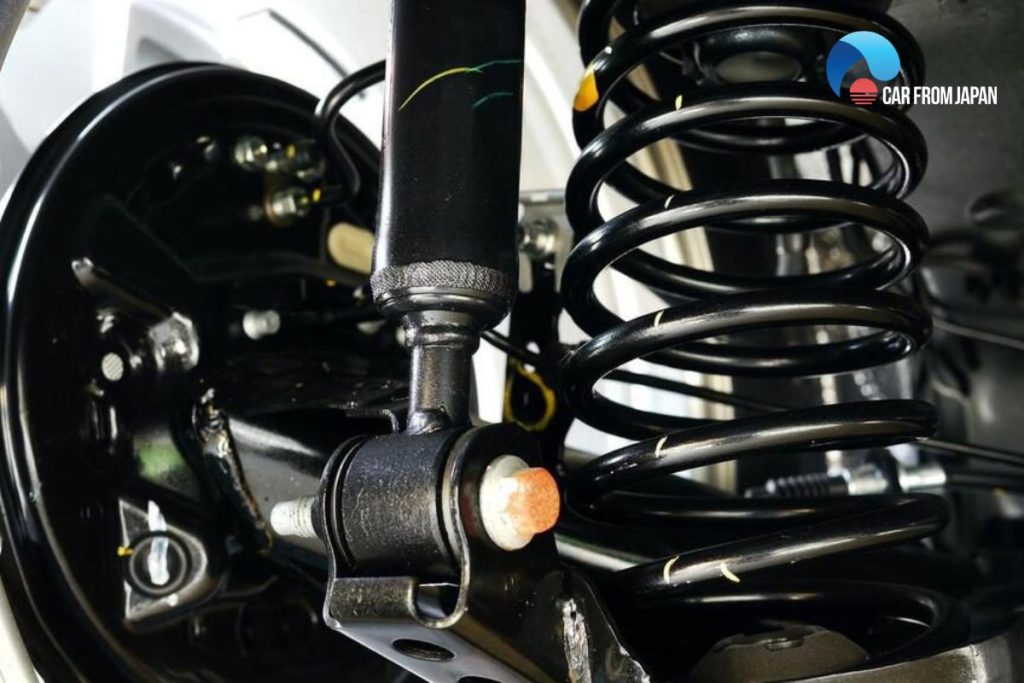
Bad Sway Bar Link
The sway bar is a stabilizer bar that connects the wheels on opposite sides of the vehicle. The sway bar is in charge of controlling “body roll” by distributing your vehicle’s weight to both sides of the suspension.
When your vehicle enters a turn, the sway bar maintains vehicle level by minimizing body roll by transferring vehicle weight to the outside wheels.
It also maintains solid contact with the road surface by compressing the suspension components on the inside wheels.
Because sway bar links are responsible for transferring the force of motion from the wheels to the sway bar and to the rest of the suspension system, if a sway bar end link is damaged, the controllability of your vehicle and the safety of your passengers are at risk.
While some sway bar links have bushing that can be replaced, other sway bar links require replacements upon wearing out.
Clunks and squeaks and thumping when driving over bumps are warning signs of a broken or faulty sway bar link.
Over-steering and excessive lean through turns are also symptoms of worn sway bar links, but they can also indicate larger issues with your vehicle’s suspension system.
Do not ignore symptoms of faulty sway bar links or other suspension components. If these are not repaired or replaced, they can grow into larger problems and more expensive repairs.
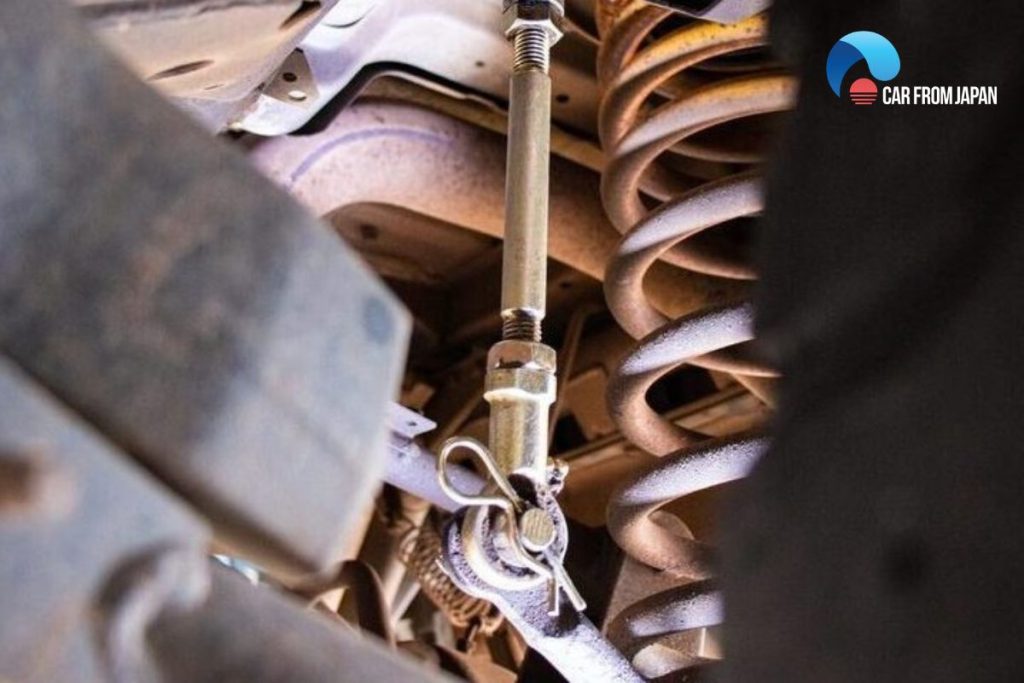
Worn Control Arm Bushings
Bushings are cushions made of rubber, polyurethane (often shortened to “poly” or “urethane”), or other materials.
They are installed on car suspension and steering joints to absorb road bumps, control joint movement, and reduce noise and vibration.
Bushings are typically thick, rubbery washers through which suspension components – or the bolts that connect them — pass.
Bushings allow for more movement as they wear. On rough roads, the driver may feel a shimmy from the front of the vehicle or hear clunking or rattling noises when turning the wheel or braking hard, or a thumping sound when going over a bumpy road.
Drivers may also encounter poor handling or jerky steering. Failure of rear suspension bushings may be more difficult to detect because they are not involved with the steering system and are less affected by cornering.
When bushings wear, they put more strain on the joints and connected parts, similar to how cartilage protects knees and elbows. Worn bushings, like bone-on-bone contact, can allow metal-on-metal contact.
Worn control arm bushings can cause the front end of the vehicle to slip out of alignment and cause tire problems.
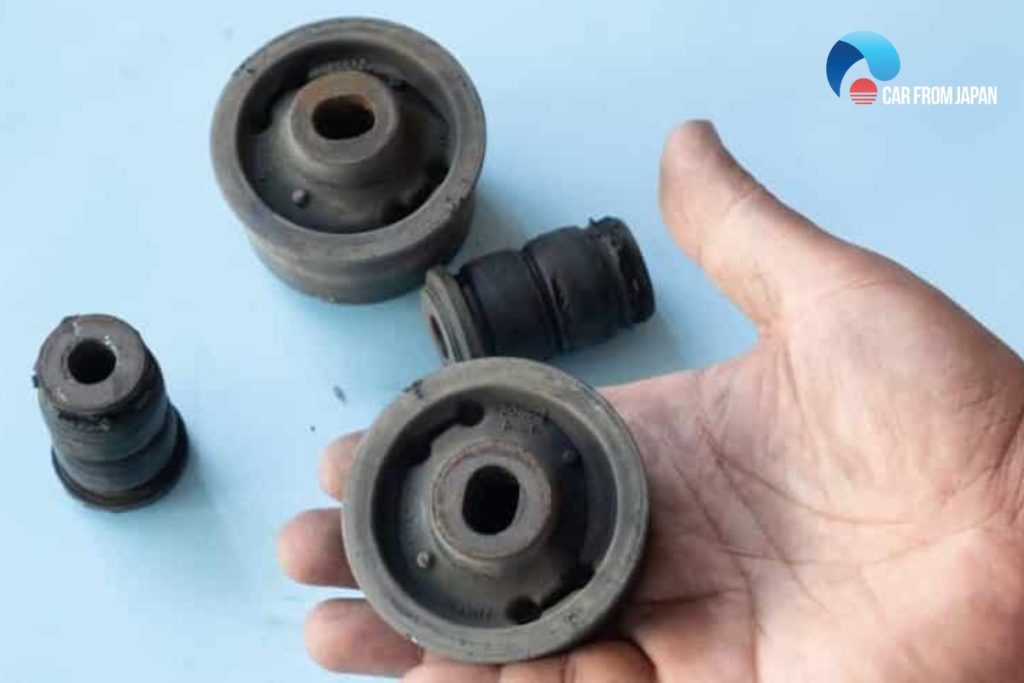
Loose Brake Caliper
Calipers, or brake calipers, are some of the most important components of modern disc brake systems.
They work with the brake pads and rotors, as well as the rest of the hydraulic system, to slow and stop the vehicle.
When you press the brake pedal, the brake fluid pressure is pushed through the master cylinder to the caliper, which extends the piston and presses the brake pads against the rotors to slow the car down.
Whenever you notice any sort of high-pitched noises, sudden thumping when driving over bumps, or impact sounds when you apply the brakes, it is a sign of a loose caliper. Even though, there are other possible outcomes, such as calipers sticking or binding.
However, a brake caliper in this condition will be unable to properly stop the vehicle, potentially resulting in premature brake wear.
As a result, whenever you brake, you should always be on the lookout for any unusual sounds coming from the wheels.
A backing plate is attached to the back of each brake. When the plate is bent inward, it rubs against the rotor or caliper, causing a clicking sound – a metallic rubbing or squealing noise.
A vehicle that makes a thumping noise while going over a bump may reveal an issue mainly in the suspension system or it can be in the brake system.
Not only do these systems provide a comfortable ride but it plays a critical role in the safety of the vehicle, especially when cornering and braking.
If you notice a noise while going over bumps, you should have it inspected to make sure that they are working properly.
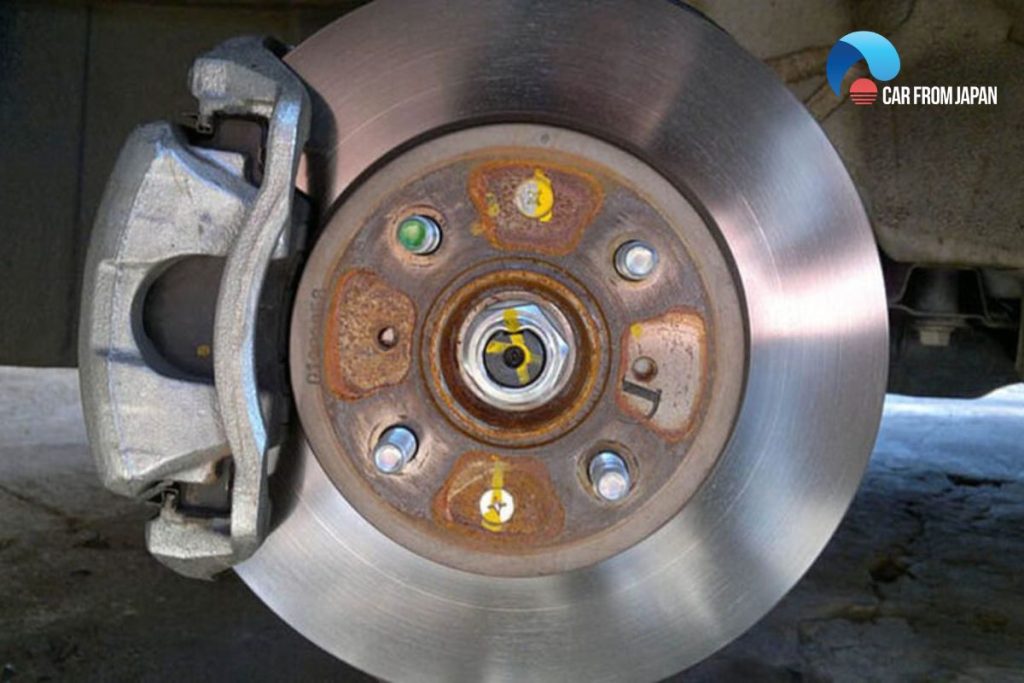
FAQs on Thumping Sounds While Driving Over Sharp Bumps
Why does the thumping sound only happen on sharp bumps, not on gentle ones?
Sharp bumps create rapid suspension compression, which reveals play in worn bushings, mounts, or loose bolts that may stay quiet during slow, smooth movement.
Why do I hear a single thump after every bump instead of continuous rattling?
That usually means one component – like a strut mount, sway bar link, or control arm bushing – is moving abruptly and resetting each time you hit a bump.
Why does my car make a thump only when hitting bumps on one side (left or right)?
That points to an issue isolated to that corner, like a worn shock, broken spring, or loose sway bar link specific to that wheel.
Why does the thumping seem louder in the cabin than outside the car?
Because sound travels through the chassis. A worn suspension mount or crossmember bushing can transmit impact noise directly into the cabin structure.
Why does the thumping go away after driving for a while?
Rubber and metal components expand slightly with heat and movement, temporarily tightening gaps, but the noise will likely return once things cool down.
This is that thumping sound that you should pay attention to when you are driving, check this video from Cristian Lemus!
Now you know more about several common reasons for the thumping sounds while driving over bumps.
Hope you find this piece of information insightful and we will see you next time with even better Car maintenance tips!

